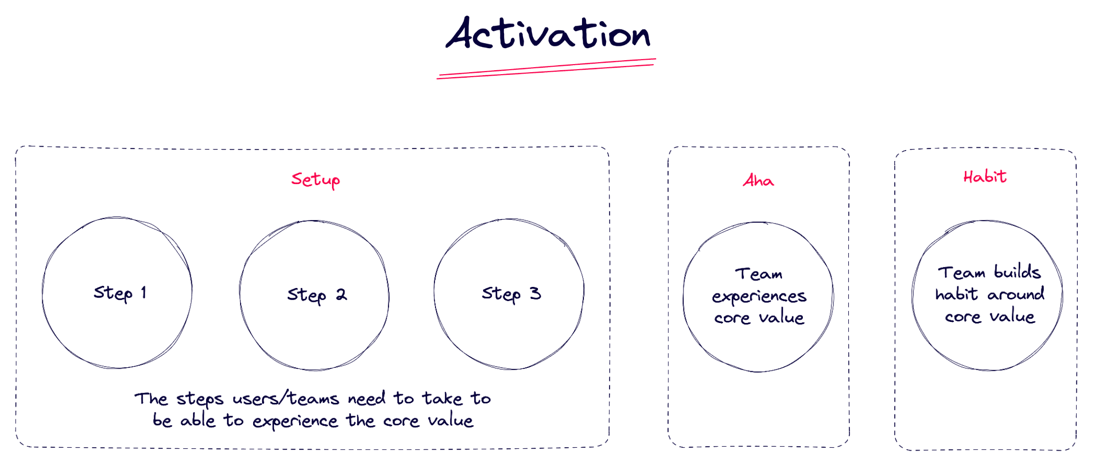Activation is the most important lever at your disposal to improve usage retention.
We spent a lot of time at Snyk thinking about and working on improving activation.
In this post, I’ll cover how we approached defining our activation metric, and in a follow-up, I’ll look at the Snyk onboarding changes designed to better connect new teams to the product's core value.

This post is presented by Sprig - build a product people love.
Sprig is an AI-powered platform that enables you to collect relevant product experience insights from the right users, so you can make product decisions quickly and confidently. Next-gen product teams like Figma and Notion rely on Sprig to build the user-centric products people love.
At Snyk, Sprig was an indispensable part of our product stack, and now, readers of The Product-Led Geek can get 10% off!
In previous posts, I advocate for the utility of a product state model.
We can use a product state model to visualise how users and teams move through our product during their lifetime.
As a quick recap…
New users and teams will sign up.
We want to activate them so they build habits around using the product.
And we then want to keep them engaged.
At any point, they might stop using the product and go dormant.
Some dormant users might later be resurrected - they come back to using the product.

We can describe retention as a function of our efforts to activate, engage and resurrect users/teams.
Retention is a lagging indicator that you don’t try to move directly.
Instead, you focus on those three input levers.
Activation. Engagement. Resurrection.

But typically, your highest point of leverage will be in improving activation.
And that is the subject of today’s post.
Tip: It’s also a critical signal for scoring PQAs
Activation
So credit to Reforge for this setup-aha-habit framework - it remains the most useful way I’ve found to think about and model activation.

To give a quick overview of it, you define setup as the steps your users or their teams need to take in order to get to the point where they can experience the core value of your product.
The aha moment is when they first experience that core value.
The habit moment is when they build a habit around the core value.
In B2B SaaS, you’ll almost always want your activation, engagement and retention metrics to be team-based, not individual user-based.
You’ll still drive behaviour at the end user level, but you’re trying to influence aggregate-level behaviour across a team and company, as that’s what you’ll ultimately be monetising.
Note: reaching the ‘aha moment’ is not enough. Activation is about establishing habits.
Snyk Example
Here’s how we applied the framework at Snyk.
Subscribe to VIG Membership to read the rest.
Become a paying subscriber of VIG Membership to get access to this post and other subscriber-only content.
UpgradeA subscription gets you:
- Every new Product-Led Geek post & the full archive
- I tip my hat to you 🎩

